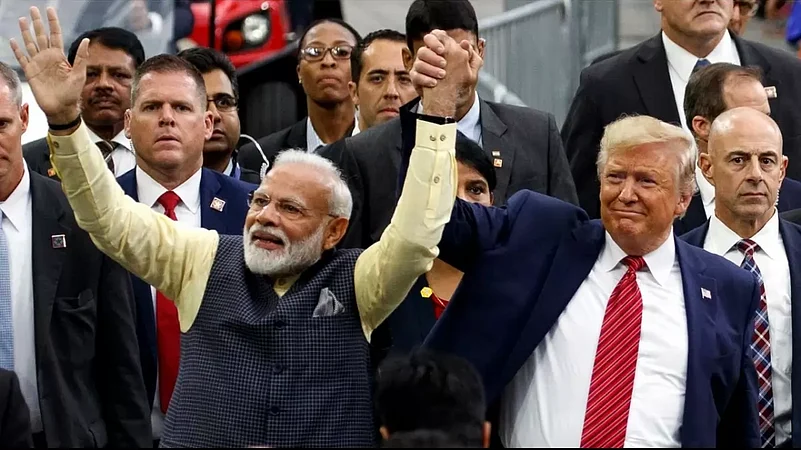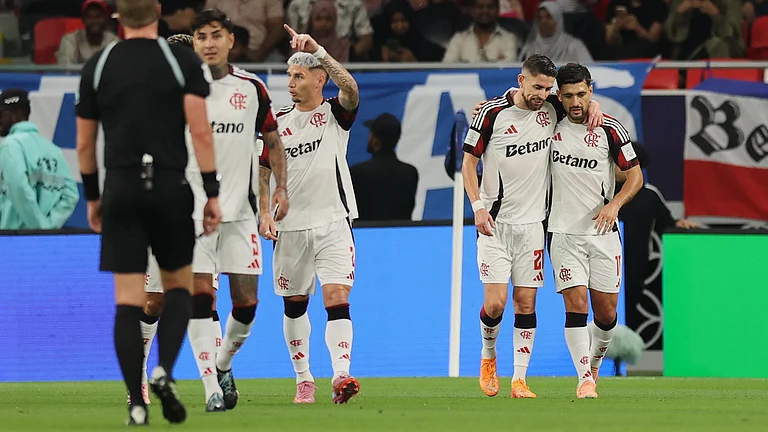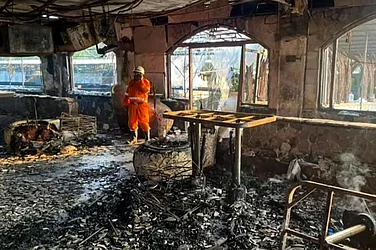Congratulating Rishi Sunak, Britain’s first Hindu and Indian-origin Prime Minister, PM Narendra Modi tweeted, “Special Diwali wishes to the ‘living bridge’ of UK Indians, as we transform our historic ties into a modern partnership.” The “living bridge” refers to ties between Indians in India and people of Indian origin in other countries.
Sunak’s prime ministership has been the subject of wall-to-wall news coverage and animated discussions on India-UK relations. One who has closely observed the coverage would surely notice how Sunak has been described as the first ‘Hindu’ leader at the top post in Britain. The growing pride in Hindu nationalism is perhaps a reflection of the hypernationalism espoused by the ruling BJP government within India.
Ever since Narendra Modi came to power as the head of the National Democratic Alliance (NDA) in 2014, he has perfected the art of filling up huge stadiums and grounds abroad with patriotic jingles and he is quite popular among large sections of the Indian diaspora in countries like the US and UK.
The "Howdy, Modi!" event in Texas in 2019, could be seen as a prime example of this popularity. A landmark event of its kind, "Howdy, Modi" was a community summit hosted by the Texas India Forum (TIF) for Prime Minister Narendra Modi and the President of the United States Donald Trump on September 22, 2019, at the NRG Stadium in Houston.
According to the official website of the event, over 50,000 people attended the event which quickly sold out, making it the largest gathering for an invited foreign leader visiting the United States other than the Pope. The summit was organised with the support of more than 1,000 volunteers and 650 Texas-based Welcome Partner organisations.
Modi and then US President Donald Trump provided the world with a glimpse of the contributions of Indian Americans to the cultural, intellectual and social landscape of the US, the organisers said.
For the first time, Modi and Trump shared the stage to address the 50,000-strong Indian diaspora during the September 22 event titled “Shared Dreams, Bright Future" that had it focuses on the success of Indian-Americans as well as the “ strength of the US-India relationship”.
Describing the joint appearance of the two leaders as "unconventional and unique", Harsh Vardhan Shringla, Indian Ambassador to the US had said that the event was a reflection of the strong bipartisan support there has been for US-India relations. “Indian Americans are an "organic bridge" between the world's two largest democracies,” he said.
The grand success of the event carried an important message: Modi was the first prime minister to recognise the power and strength of the Indian diaspora in spreading the ‘Swaraj Spirit’.
The "Howdy, Modi!" event was not Modi's first. Four years prior to it, in September 2014, four months after assuming power, Modi addressed a massive gathering at Madison Square Garden, US.
However, that visit courted controversy as this was Modi’s first since America had denied him a diplomatic visa to the US for his government's alleged complicity in the 2002 Godhra riots in 2005.
During his visit, Modi and former US President Barack Obama struck up a great bonhomie. The same was reflected in photographs, news articles, and their joint statement in which they resolved “to broaden their cooperation in various fields including defence, intelligence, counter-terrorism, Afghanistan, space exploration and science”.
In 2015, Modi was roared onto the stage of Wembley Stadium in London by a crowd of 60,000 people. While facing an attack on intolerance at home, Modi at ‘Namastey Wembley’ said, “India is full of diversity. This diversity is our pride and it is our strength. Diversity is the speciality of India."
Wild cheers and chants of “Modi! Modi! Modi!” echoed around while his counterpart, then British prime minister David Cameron, wondered aloud if he could have attracted such a crowd by himself.
Incidentally, Modi was not always as popular in the United States. His visa request to the US was turned down back in 2005 following the 2002 Godhra riots in Gujarat when he was the then Chief Minister. Modi, who has previously been questioned for his failure to prevent the sectarian violence that killed at least 1,000 persons and fuelled communal disharmony, was denied permission.
Times have since changed. And yet, the rise in India's global image is also a concern for the government as it puts the spotlight back on the nation's human rights track record.
Ahead of Modi’s visit to the US, there was mounting pressure in the West to evaluate India’s human rights activities. And India has not been faring well.
In its 2015 report, the bipartisan US Commission of International Religious Freedom (USCIRF) said incidents of religiously motivated and communal violence in India had increased for three consecutive years. In 2016, a senior Democrat on the Senate foreign relations committee, Benjamin Cardin, in a media address in Delhi, had demanded India “to do better” in terms of dealing with human rights violations.
Further, over the years, the Modi government has been criticised for deliberately targeting foreign-funded NGOs such as Greenpeace, Amnesty International and so on. But for the West, India has been a strategic trade partner and experts believe that Modi’s outlook has revived ties with prospering countries including the UK, Australia, Japan and so on.
The "Modi mania" in the West is reflected through the dramatic patriotism of the Indian diaspora. How the diaspora chooses to channel and exert its growing sphere of influence remains to be seen.


























